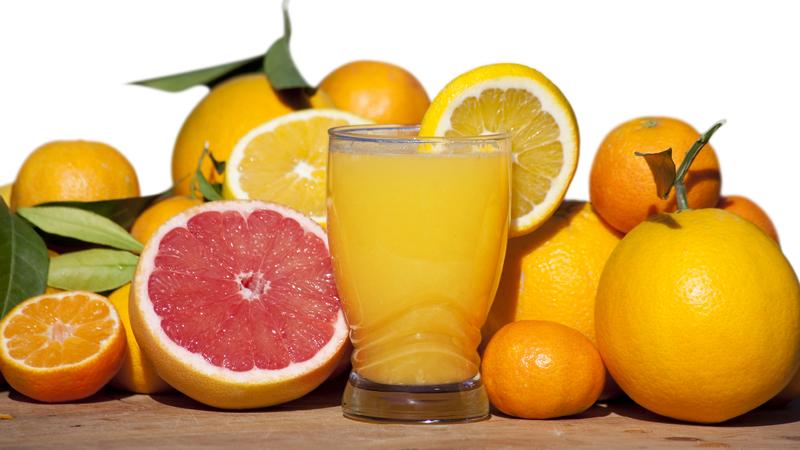VERIFY – YOU’VE GOT QUESTIONS, WE’LL FIND ANSWERS
A 9NEWS project to make sure what you’ve heard is true, accurate, verified. Want us to verify something for you? Email verify@9news.com.
THE QUESTION
This was supposed to be the comeback season for citrus growers in Florida.
That was until Hurricane Irma hit.
The winds stripped fruit from branches and uprooted trees, which also died as a result of flooding.
Losses not only affected this season's production, but long-term damage has potential industry repercussions for years to come.
The hurricane compounded challenges the industry was already facing - from a bacterial disease known as citrus greening to what the United States Department of Agriculture reports as a national decline in orange juice consumption.
The 9NEWS Verify team spoke with experts and called local grocers to find out if Colorado consumers might come across any shortfalls in the produce section.
WHAT WE FOUND
There are no expected produce shortages because of the havoc Irma wreaked in Florida, but there could be an increase in the price of orange juice.
Initial estimates determine Florida agriculture suffered more than $2.5 billion in damage from Hurricane Irma, and Florida’s citrus industry was hardest hit with more than $700 million in damage, according to Aaron Keller, press secretary for the Florida Department of Agriculture and Consumer Services.
“More than 90 percent of the oranges grown in Florida become 100% orange juice and Florida supplies about half of America’s orange juice,” said communications manager for the Florida Department of Citrus, Shelley Rossetter in an email. “Very little of what we grow is sold as fresh fruit, apart from grapefruit.”
Both Keller and Rossetter predicted consumers might see some increased price pressure on juice.
“We can’t predict what prices will do, however, with supply down, prices may increase,” Rossetter said. “However, this will not occur immediately.”
Keller said a shortage is not expected since imports can fill the gap.
Director of public affairs for Florida Fruit & Vegetable Association, Lisa Lochridge, provided the following statistics about the state’s citrus industry.

In an email Lochridge said, “there may be more damage that becomes evident over time from the trees that were sitting in floodwater for days afterward… time will tell.”
GROCERS’ RESPONSE
Verify heard back from four of the five grocers we reached out to via email about the status of their Florida produce.
Spokesperson Adam Williamson said local King Soopers stores have been able to source citrus out of California and Texas. He said while a few items might be impacted, significant impacts are not anticipated.
“We will do our best to ensure the customer isn’t effected by price or by product availability through our relationships locally and outside our region,” Williamson said.
He did mention the orange crop is having a longer than usual growing season in California, so navel oranges are slightly delayed.
Safeway director of public affairs, Kris Staaf, said the hurricane in Florida had very little impact on Safeway’s citrus supply.
“Safeway procures produce from multiple suppliers around the globe,” Staaf said. “We are currently selling citrus from South America and California. We buy very little citrus from (Florida) so the hurricane had little impact on our citrus supply.”
Natural Grocers director of public relations, Amber Dutra provided a company response, which said in part, “Natural Grocers does not receive a lot of its citrus produce from Florida… so, the impact to Natural Grocers has been small, but we expect the potential for companies to start tapping into California, Texas and Arizona, to be very likely, which will then impact our supply.”
Spokesperson for Whole Foods McKinzey Crossland said, “we won’t have the information you need,” and suggested for Verify to contact Florida citrus groups directly.
Sprouts' communications manager Diego Romero said they are, "not experiencing a shortage in supply or an increase in pricing for produce or juice."
DAMAGE ESTIMATES
According to a Florida Department of Agriculture and Consumer services document addressing Hurricane Irma’s damage to the state’s agriculture, Irma made landfall on the Florida Keys as a category 4 hurricane, and in Southwest Florida as a category 3 hurricane.
The document states it was the largest, most powerful hurricane ever recorded on the Atlantic Ocean, and is one of the strongest hurricanes ever to make direct landfall in the United States.
“Hurricane Irma’s path coincided with some of Florida’s most productive agricultural landscapes, and consequently it caused major losses to all segments of production agriculture,” according to the document.
Oranges and grapefruit were affected in all counties with commercial groves, so there may not be as much juice or fruit as previous years, but consumers are not expected to feel an impact immediately, according to Rossetter.
The Florida Department of Agriculture report stated 421,176 acres of citrus production affected by hurricane or tropical storm force winds, and provided the following estimates:
- 94,144 acres in Collier and Hendry counties with a projected loss of $2,500 per acre
- 254,956 acres in Lee, Brevard, Glades, Charlotte, St. Lucie, Highlands, Indian River, Okeechobee, DeSoto, Hardee, and Osceola counties with a projected loss of $1,750 per acre
- 72,076 acres in Polk and Martin counties with a loss of $1,100 per acre.
“Losses in this industry are reported to be very heavy, with some farms reporting 100% fruit drop,” according to the document.
In the email, Rossetter said depending on the region, growers estimate that 30 to 70 percent of trees in the state have fruit on the ground. In some areas, it could be as much as 90 percent fruit loss.
The report detailed overwhelming damage to current crop and infrastructure including destroyed fences, shade structures, ground cover for row crops, uprooted or cracked trees and bushes, laid down sugarcane, and animals that were affected by extreme wind and rain.
COMEBACK LOST
According to Keller, before the hurricane growers were optimistic about an anticipated rebound this season with a predicted increase in production for the first time in five seasons.
“Things were starting to look a little bit brighter, we were beginning to level off and stabilize from some of the impacts from citrus greening,” Keller said.
He said citrus greening impacts how the trees deliver nutrients, and the disease is spread by a tiny pest.
The disease does not have a cure and results in fewer and smaller fruit over time – nearly every grove in the state is infected, according to Rossetter. This caused crop production to drastically reduce, dropping from about 240 million boxes of oranges in 2004 through 2005, to less than 54 million boxes projected this season.
“Whatever damage was caused by Hurricane Irma, it will be on top of a 70 percent decline due to disease over the last decade,” Keller said.
Irma hit only a few weeks from harvest.
“It really was a gut punch given the expectations were higher this year and we were so close to harvesting what was going to be a promising crop,” Keller said.
Since the damage from the storm is still unfolding, he said it is still too early to determine the total impact.
“But Florida’s citrus industry is resilient, they have faced freezes and fires and disease, and they’ve rebuilt and recovered every time. And we’re hopeful that they can again,” Keller said.
OTHER COMMODITIES AFFECTED
With Thanksgiving and Christmas meals on the horizon, shoppers can expect their produce to be imported from places like Mexico along with South and Central American countries.
“Pretty much any fresh produce grown in the United States during those winter months is coming from Florida,” Keller said. “Right now, because of the damages, it looks like Florida will miss out on those opportunities this year.”
Winter vegetables include green beans, peas, lettuce and cabbage. Other commodities impacted include beef cattle, dairy, aquaculture, other fruits and vegetables, greenhouses, nurseries, floriculture, field crops and forestry.
“You’ll see imports from other countries will come in and fill that gap,” Keller said. “There’s not expected to be any sort of shortage necessarily, it’s just that those will be imports as opposed as to from Florida.”
He said there will most likely not be a price increase with the other impacted commodities.
“The damage is continuing to unfold, but this isn’t the first time Florida’s growers have experienced damage and its likely not the last,” Keller said. “With a little bit of support and a little bit of time, we fully expect Florida citrus to rebound and come back.”
Although Rossetter said there is not much that can be done to salvage lost crop, Florida’s agricultural commissioner and governor are working to secure federal assistance for growers impacted by Hurricane Irma.
BOTTOM LINE
Although the full extent of the damage in Florida as a result of hurricane Irma will remain unknown for months, experts and grocers currently do not anticipate a produce shortage or major price increases.


